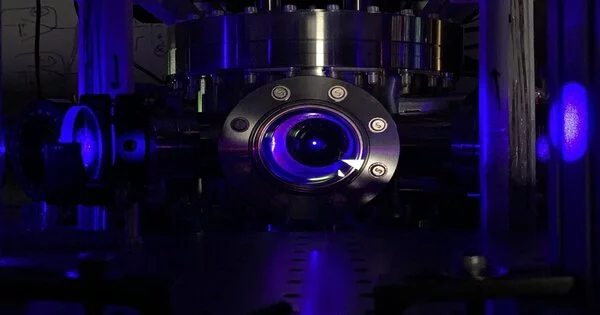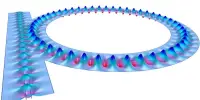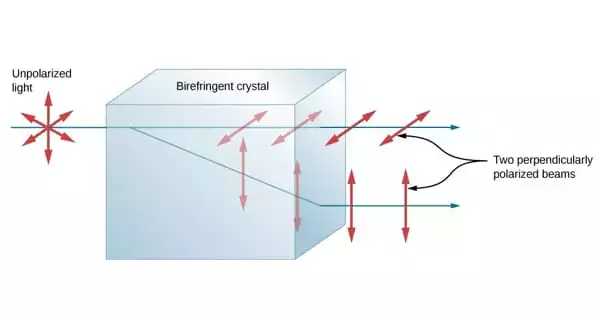Physicists have created one of the most accurate atomic clocks ever. Their equipment, known as an optical lattice atomic clock, can measure time differences to an accuracy comparable to losing just one second per 300 billion years and is the first example of a ‘multiplexed’ optical clock, in which six different clocks may coexist. Its architecture allows the researchers to explore methods for searching for gravitational waves, detecting dark matter, and discovering new physics using clocks.
University of Wisconsin-Madison physicists have created one of the most accurate atomic clocks ever, according to a paper published in the journal Nature.
Their equipment, known as an optical lattice atomic clock, can measure time differences to an accuracy comparable to losing just one second per 300 billion years and is the first example of a “multiplexed” optical clock, in which six different clocks can exist in the same environment. Its architecture enables the scientists to test methods for searching for gravitational waves, detecting dark matter, and discovering new physics using clocks.
“Optical lattice clocks are already the best clocks in the world, and here we obtain this degree of performance that no one has seen before,” says Shimon Kolkowitz, a UW-Madison physics professor and senior author of the paper. “We’re working to improve their performance as well as build new applications that are allowed by this better performance.”
Optical lattice clocks are already the best clocks in the world, and here we obtain this degree of performance that no one has seen before. We’re working to improve their performance as well as build new applications that are allowed by this better performance.
Shimon Kolkowitz
Atomic clocks are extremely exact because they take advantage of a fundamental property of atoms: when an electron changes energy levels, it absorbs or emits light with a frequency that is the same for all atoms of the same element. Optical atomic clocks keep time by using a laser that is tuned to precisely match this frequency, and they require some of the world’s most sophisticated lasers to keep accurate time.
Kolkowitz’s group, on the other hand, has “a relatively terrible laser,” so they knew any clock they made would not be the most accurate or precise on its own. However, they were also aware that many downstream uses of optical clocks would necessitate the use of portable, commercially available lasers such as theirs. It would be a boon to create a clock that could use ordinary lasers.
They developed a multiplexed clock in which strontium atoms are divided into numerous clocks organized in a line in the same vacuum chamber. Using only one atomic clock, the researchers discovered that their laser could only dependably excite electrons in the same number of atoms for one-tenth of a second.
When scientists shone the laser at two clocks in the chamber at the same time and compared them, the number of atoms with excited electrons remained constant for up to 26 seconds. Their findings indicated that they could run significant tests for considerably longer than a standard optical clock’s laser would allow.
“Normally, the performance of these clocks would be limited by our laser,” Kolkowitz explains. “However, because the clocks are in the same environment and are exposed to the same laser light, the laser effect is completely lost.”

The committee then inquired as to how exactly they could measure the time disparities between the clocks. Depending on gravity, magnetic fields, or other circumstances, two groups of atoms in slightly different settings will tick at slightly different rates.
They repeated their experiment a thousand times, recording the difference in ticking frequency between their two clocks for approximately three hours. Because the clocks were in two slightly different places, the ticking was slightly different, as expected. The team proved that as more measurements were taken, they were better able to measure such changes.
Finally, the researchers were able to identify a variation in ticking rate between the two clocks that corresponded to them disagreeing with each other by only one second every 300 billion years – a measurement of precision timekeeping that sets a world record for two spatially distant clocks.
It would have also set a world record for the most exact frequency difference if not for another research published in the same issue of Nature. A team from JILA, a research center in Colorado, led the investigation. The JILA group detected a frequency difference between the top and bottom of a dispersed cloud of atoms nearly ten times better than the UW-Madison group.
Their findings, acquired at one millimeter spacing, are also the shortest distance at which Einstein’s theory of general relativity has been tested with clocks to date. Kolkowitz’s team plans to do a similar test soon.
“What’s amazing is that we exhibited comparable performance to the JILA group despite employing an orders of magnitude poorer laser,” Kolkowitz says. “That’s huge for a lot of real-world applications, where our laser looks a lot more like what you’d take out in the field.”
Kolkowitz’s team examined the frequency variations between each pair of six multiplexed clocks in a loop to demonstrate the potential applications of their clocks. They discovered that when they return to the first clock in the loop, the discrepancies total up to zero, verifying the consistency of their measurements and opening the door to the possibility of detecting minuscule frequency changes within that network.
“Imagine a cloud of dark matter passing over a network of clocks; can I see that dark matter in these comparisons?” Kolkowitz inquires. “That’s an experiment we can now perform that you couldn’t perform in any previous experimental system.”















